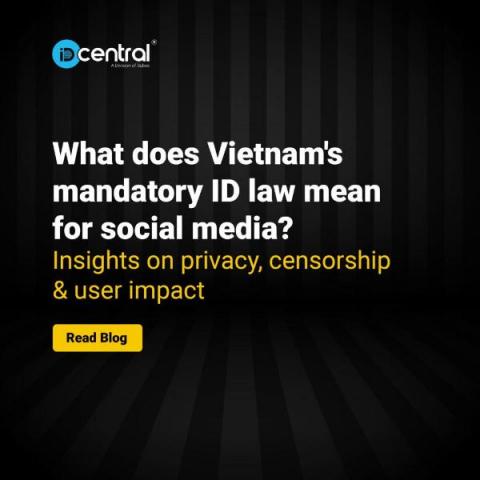Security | Threat Detection | Cyberattacks | DevSecOps | Compliance
Digital Identity
Unlocking Key Insights and Use Cases of Data Orchestration in Identity Verification Solutions
Business Insider reports that the identity verification market is anticipated to reach a value of $12.8 billion by 2024 as a result of the rising amount of digital transactions that require precise and trustworthy identification data. However, a lot of individuals don’t comprehend what identity entails. Identity is more complicated than it first looks since it can vary based on the setting and sector. For the various sources of identification data to be combined, data orchestration is essential.
Learnings from Discussing Identity Security with IDC
A few months ago, I had the pleasure of speaking with Jay Bretzmann, research vice president of security products at IDC. We discussed various security topics trending in 2023, including open identity standards, passwordless technologies like passkeys enabled by FIDO 2.0, and identity-first zero trust security strategies. It became clear that we had an opportunity to share these insights by turning our conversations into an Analyst Connection interview.
Identity fatigue - the security challenge that threatens identity processes and systems
There’s a new cybersecurity challenge threatening the identity processes and systems of organizations worldwide: identity fatigue.
The Seven Types of Non-human Identities to Secure
Non-humans are everywhere these days. Sure, you’ve seen the much-deserved hype about how AI-powered tools like ChatGPT are going to change everything. But there are plenty of more mundane non-human entities that you interact with in your daily life: the smart thermostat program that knows to cool down your house at a certain time every day, the application on your phone that suggests directions to a place you’ve searched for, and many others.
How to Write a PoC for an Uninitialized Smart Contract Vulnerability in BadgerDAO Using Foundry
In this post, we’re going to learn how Foundry can be used to write a proof of concept (PoC) for uninitialized smart contract vulnerabilities. We will take a look at and exploit a simple uninitialized smart contract vulnerability we found in BadgerDAO. If you are familiar with this type of vulnerability, jump straight to the Foundry PoC section. You can also find the PoC code on this GitHub repository.
What does Vietnam's mandatory ID law mean for social media? | Insights on privacy, censorship & user impact
Vietnam’s government is taking steps to combat online scams and other forms of cybercrime by making it mandatory for users of Facebook, TikTok, and other social media networks to verify their identities using real-time identity verification. According to the Global Anti Scam Alliance, Vietnam has one of the highest rates of online fraud in Asia.
Overcoming Healthcare EHR Access Hurdles
Healthcare cyberattacks are increasing in “frequency, severity and sophistication,” said Nitin Natarajan, U.S. Cybersecurity and Infrastructure Security Agency (CISA) deputy director, in his recent HIMSS23 Healthcare Cybersecurity Forum keynote. Attacks on hospitals have surged by 86% since 2021, with the average healthcare organization experiencing two or more ransomware attacks in the past year. “And this is going to continue to increase,” Natarajan warned.
EP 27 - How Identity Factors into DevSecOps
In today’s Trust Issues episode, Dusty Anderson, a managing director of Global Digital Identity at the consulting firm Protiviti, digs into all things DevSecOps and cautions against a one-size-fits-all approach. In conversation with host David Puner, Anderson emphasizes the significance of strategic planning and well-defined goals – demonstrating how bite-sized steps can add up to major security wins and bottom-line benefits over time.
The Power of Aadhaar eKYC: How India's National ID System is Revolutionizing Online KYC
In 2023, India’s Aadhaar system has become a critical component of the country’s financial infrastructure. With over 1.3 billion registered users, Aadhaar has enabled a range of digital services that were previously impossible, including eKYC (electronic know-your-customer) for financial institutions. In this blog, we’ll explore the benefits of Aadhaar eKYC for businesses and consumers alike.









